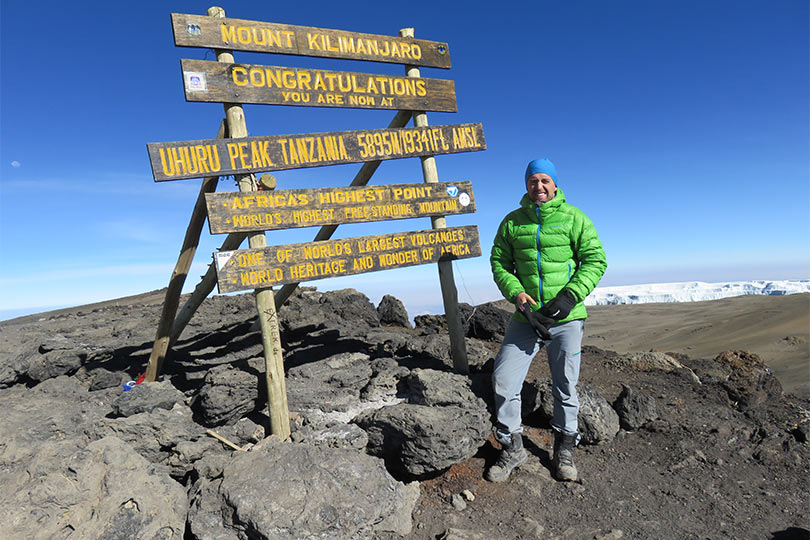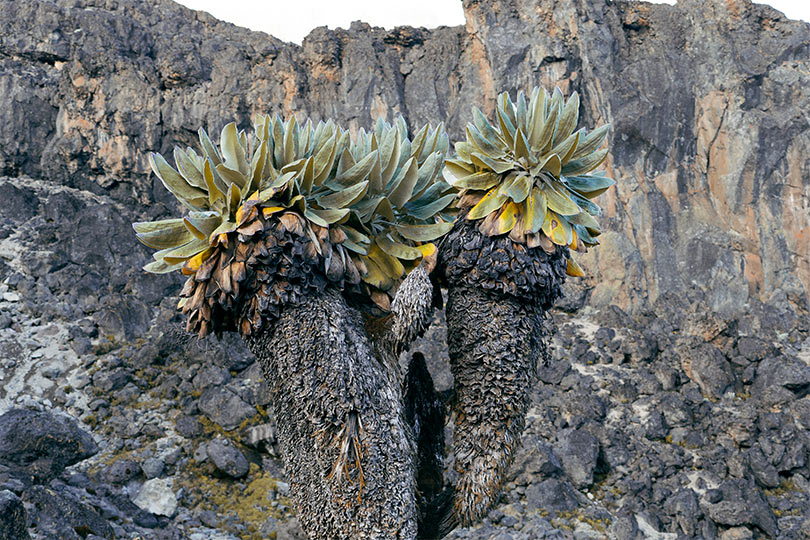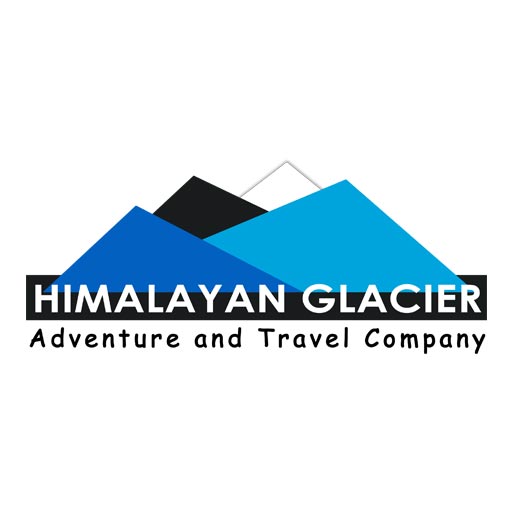Mount Kilimanjaro in Tanzania, the world’s highest freestanding mountain is among nature’s majestic formations lying above the African plains. Consisting of three cones: Kibo, Mawenzi and Shira, Kilimanjaro is a passive volcano making it one the most sought-after climbing destinations for travelers from all over. So, does it really mean that climbing Mount Kilimanjaro is difficult?

Standing at an elevation over 5,895 meters (19,340ft.), the snow-capped peak in Tanzania which is also known as the Uhuru Peak locally, is the tallest mountain in the African continent. A guided tour to climb to the top of Kilimanjaro by bumping into high altitudes is definitely a hard and quite a demanding task, especially due to the varying weather conditions.
The mere fact that its snow-capped peak named ‘Uhuru’ that’s projected to cease to exist within 20 years as per experts, makes it a lucrative once-in-a-lifetime destination.
In case you didn’t know, about just two-third of the climbers out of 25 thousand make it to the top of Kilimanjaro, while the rest return mostly due to altitude complications.
On that note once again, does it mean that Mt. Kilimanjaro is really difficult to climb or a daunting task? Well, the answer to this question is as relative as the origin and meaning of Kilimanjaro’s name since the difficulty varies on the individual climber, gears, travel company, different routes and several other factors.
Things to know about Kilimanjaro Climb Difficulty
1. Route To Mount Kilimanjaro
Like several mountains, the trip to the summit of Kilimanjaro aka ‘The Roof of Africa’ consists of various alternative routes. Altogether there are seven routes that have been established until now.The difficulty in Kilimanjaro routes depends on several factors besides choosing the most favorable route to climb.
Machame is the most popular route that takes six days to reach the peak. But since it’s a very safe route with less difficulty like Marangu and Rongai, there is heavy traffic of climbers. Even the most experienced and extreme climbers prefer routes like the Umbwe and Northern Circuit trail to avoid crowds and challenge themselves.
| Route | Difficulty | Traffic | Success Rate | Recommendation |
|---|---|---|---|---|
| Lemosho – 8 Days | High | Low | 90% | Highly Recommended |
| Marangu Route – 8 Days | Moderate | High | 95% | Not Recommended |
| Northern Circuit – 10 Days | High | Low | 90% | Highly Recommended |
| Machame Route – 8 days | High | High | 95% | Good To Explore |
| Rongai Route | Moderate | Low | 95% | Okay To Explore |
The lesser known Western Breach route is not used by adventure companies due to safety concerns. It is very important in choosing the best route to climb Mount Kilimanjaro based on the number of days, level of your experience and the climbing cost.

The local authorities recommend hikers to take a less difficult route to the top of Kilimanjaro with a priority of safety and convenience.
2. Climate Conditions of Mt. Kilimanjaro
Another factor that determines the difficulty of climbing Mt. Kilimanjaro is time and the environmental conditions. The diverse ecology surrounding the volcano is open all through the year for tourists. However, that doesn’t mean it is always a favorable time to climb the mountain.
Knowing the best time to climb Kilimanjaro will definitely make your trip more interesting and comfortable. Some months of the year are more challenging than others, especially during April, May and November. Due to wet conditions during this time, climbers face challenges even in the safer routes due to muddy paths, storms and visibility issues.
It is worth remembering that wet clothes can lead to chilling conditions and hyperthermia. So, climbing Mt. Kilimanjaro is a bit difficult in rainy seasons but not impossible at all.

Experienced climbers can certainly get over the muddy steps and slippery trails even though the scenery from the mountain won’t be much pleasant.
On the other hand, if climbers decide to visit Kilimanjaro peak between the months of January to early March through June to October, then there are certain benefits. During this time, the sky is clear and the hiking experience is less difficult than during rainy seasons. But just keep in mind that you won’t have the luxury of solitude if you travel during this period. Being the peak hiking season, you can expect a crowd of travelers along the trail.
3. Variations of high altitude and temperature in Mt. Kilimanjaro
Although not primarily a wildlife destination, Kilimanjaro National Park supports five different vegetation zones. Each zone has its own distinct flora and fauna regulated by the respective altitudes.

- Cultivation zone: This zone receives the most rain, about 2300mm per year. In this zone, there are small villages and people dwell on agriculture, livestock breeding and plantations. These zones lie at altitudes up to 1800m (6000ft.) with the median temperature ranging between 27º – 35ºC (80º – 95ºF).
- Rainforest zone: The rainforest zone also receives as much rain as that of the cultivation zone. The vegetation is dense due to the frequent rains. This zone houses the greatest variety of flora and fauna. This zone is the wettest part of the mountain and looks like the archetypal tropical jungle – hot, humid and colored in infinite shades of green. The rainforest zones lie at altitudes between 1800m to 2750m (6000ft. to 9000ft.) with the median temperature ranging between 15.5º – 27ºC (60º – 80ºF).
- Heath and Moorland zone: The heath and moorland zones overlap and occupy the area above the forest or low alpine zone. Rainfall in this zone is about 1300mm per year and grasses dominate the mountain slopes. The zone is studded with abundant wild flowers and has an ethereal beauty of its own, particularly in the mornings. The zone is notable for the two distinctive plants: the giant lobelia (Lobelia decknii) and the giant groundsel (Dendrosenecio kilimanjari). The moorland zones lie at altitudes between 2750 to 3960m (9000ft. to 13000ft.) with the median temperature ranging between 4.5º – 15.5ºC (40º – 60ºF).
- Highland Desert zone: Classified as alpine desert or semi-desert due to its low rainfall, the highland desert zone roughly lies between 3960m to 4875m (13000ft. to 16000ft.). This zone experiences dramatic daily temperature contrasts. Here plants survive in drought conditions because the zone receives rainfall as less as 200mm per year. The median temperature of the highland desert zone ranges between 1º – 10ºC (30º – 50ºF).
- Arctic or Ice Cap zone: There is virtually no water in this zone and almost nothing survives here with just few masochistic lichens. The arctic zones lie at altitudes above 16000ft. and up to 19350ft. with the median temperature ranging between -17º to -6.5ºC (0º – 20ºF). At these zones, when the rare precipitation occurs, most of the moisture instantly disappears into the permeable rocks or onto the glaciers.
4. Willingness & Proper Health
In comparison to reaching the Mt. Everest base camp in Nepal, the trek to the summit of Mt. Kilimanjaro is a lot more different. But, it is your patience and a strong determination on the journey that will determine the difficulty of climbing the mountain. And, this is another important factor not to be overlooked.
Proper health condition is a physical requirement while your willingness is the mental strength that will help succeed climbing to the top of Kilimanjaro. The food during the Kilimanjaro climb that we provide will help maintain your physical health conditions.

It takes more than six days to reach the summit of Kilimanjaro. The conditions you will be facing during this time period won’t be the one that you’re usually accustomed to.
Besides sleeping in tents, you will have to adjust to a diet that is suitable for hiking. And above all, there are chances of getting Acute Mountain Sickness (AMS) or altitude sickness throughout the climb.
Difficulty will arise if a climber does not drink an adequate amount of water while hiking to stay hydrated. Likewise, it is necessary to consume nutritious diet throughout the journey.
Apart from all these, you should consult a medical specialist for proper checkup before deciding on venturing to climb Mt. Kilimanjaro. This implies especially to people with respiratory health issues. But if all else is good with you, then the climb certainly won’t be that difficult.
5. Adventure Travel Company & Essential Gears
The difficulty of climbing Kilimanjaro will also depend on the reputation and reliability of the company. After all, the company you choose will manage the essential gears and hiking guide for your trip. This is to ensure the safety and better experience of all climbers.
Make sure to know about the guide to client ratio that the agency provides. Due to the amount of food and gears that need to be carried, at least two porters per climber is allocated in routes like Marangu. This ratio also depends on the route that a climber will be choosing to reach Kilimanjaro’s summit.

Also, make sure that your travel operator has long years of experience and well-treated guides under TPO (Tanzania Porters Organization) and Kilimanjaro Guides Association(KGA). Because, if the guides and porters you climb with aren’t eligible, then difficult situations may arise while climbing. So, the whole climbing crew must be experienced enough to handle all unseen complications that may arise.
On the other hand, you don’t want to find yourself sleeping inside a leaking tent or be given a poor diet. So, make sure you choose the right adventure travel company for climbing Mt. Kilimanjaro. You are prone to face more difficulties if the company you chose to travel with aren’t proficient and have ill-paid guides and porters.
Above all, remember that difficulties while climbing Mt. Kilimanjaro isn’t just about something you’ll face individually. It is also about your overall experience in the Tanzanian wilderness.
So, it’s pretty obvious that climbing Mt. Kilimanjaro isn’t really difficult if you take necessary measures beforehand. Find your right adventure company in Himalayan Glacier and see how we can help you choose the right route up to the Uhuru Peak.
Frequently Asked Questions
How long does it take to climb Mt. Kilimanjaro?
Depending on the route you choose, the number of days required to climb Mt. Kilimanjaro varies between 5 to 9 days. Note that the more days you spend for acclimatizing, the higher your chances to reach the summit. We recommend trekkers to take a minimum of 6 and ideally 7 or 8 days for reaching the top of Kilimanjaro and back. And, for those trekkers who have more time to spend, can opt for more gradual and scenic routes requiring 10 days or more. Nevertheless, there are a number of factors including the chosen route and climbing experience that determines the number of days required to climb Mt. Kilimanjaro.
Is Kilimanjaro climbing harder than Everest Base Camp trek?
Comparably, while climbing Kilimanjaro you will be reaching to higher altitudes much quicker than on Everest base camp trek. For most routes on Kilimanjaro, the starting point is Moshi which is situated at 2,932 ft. above sea level. Reaching the top of Kilimanjaro at 19,341 ft. above sea level between 4 to 6 days is more than 16,000 ft. gain in altitude. Likewise, Kathmandu is the starting point on the Everest route, which is located at 4,600 ft. above sea level. Reaching Everest base camp at 17,599 ft. above sea level in 8 or 9 days is almost 13,000 ft. gain in altitude. However, the difference is that trekkers need to walk longer daily distance on the Everest trek.
When it comes to Everest base camp vs Mount Kilimanjaro climb , there are other factors to consider. For example, trekkers will sleep at teahouses or luxury lodges throughout during the Everest trek. Whereas on the Kilimanjaro climb, trekkers will have to sleep inside tents, except for the Marangu route which has sleeping huts.
There are lots of ups and downs on the Everest trekking route while the summit night on the Kilimanjaro climb is harder than anything else on the entire Everest trek. The success rate of Everest base camp trek is over 90% while the statistics state the overall success rate on Kilimanjaro at just 65%. Comparing all the factors, Kilimanjaro is quite harder than Everest base camp trek, mostly because of the quick ascent and rapid gain in altitude.
Can you climb Kilimanjaro solo?
In the truest sense, you cannot climb Kilimanjaro solo as the Tanzanian Tourism Board does not permit Kilimanjaro climb without a guide, porter and other crew members. But, yes if you wish to climb without any other hikers as a group – it is possible! But again, you will not be allowed to go without being assisted by guides and porters. If you are only the climber, then you will be assisted by 4 other crew members as designated by your chosen trekking agency.
Which is the hardest route on Kilimanjaro?
Umbwe route is generally considered to be the hardest and most challenging route on Mount Kilimanjaro. Yet, it is one of the shortest routes to the Southern Glaciers and the Western Breach. If you are looking for a truly challenging climb to the Uhuru Peak, this is the route you should probably choose. Being hard, the trail is usually quiet and frequented by only some highly experienced climbers.
The Umbwe route is a non-technical climb, but it offers steep ascents and trekkers need to crawl over rocky terrains at certain points on the trail. This route is the most direct approach up the mountain and a perfect way to test the fitness and stamina of experienced mountain trekkers. And, because it is the hardest route on Kilimanjaro, the success rate on this route is obviously lower than the other routes.
Which route on Kilimanjaro is the best one for me?
Well, the answer to this question is quite vague as there is no single best Mt. Kilimanjaro route. It actually depends on several factors such as the time and money that you have, previous experience and fitness, the season, and personal preferences.
There are several routes varying in landscape and number of days for the ascent. However, each route has a peculiar feature on its own. Choosing the best route to climb Mt. Kilimanjaro actually depends on your personal preference. While one route that is easy to you might be as difficult for other trekkers.

A leading adventure & tour operator in the Himalayas since 1992, Himalayan Glacier Adventure & Travel Company® is the #1 guiding adventure travel company on Mount Everest Base Camp and beyond with 98% success rate. Each of our holidays is truly a tailor-made package which we design for all ages, groups, families & solo travelers.







Still wanting to hike that mountain some day. Thx